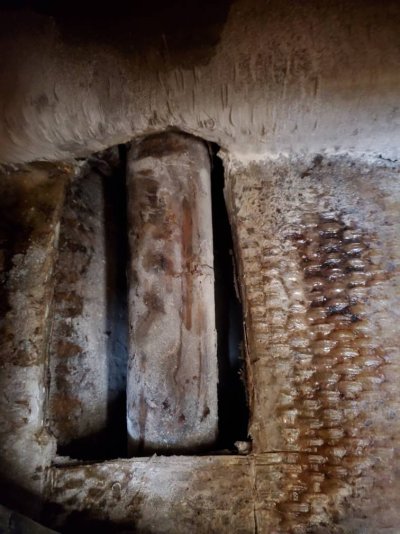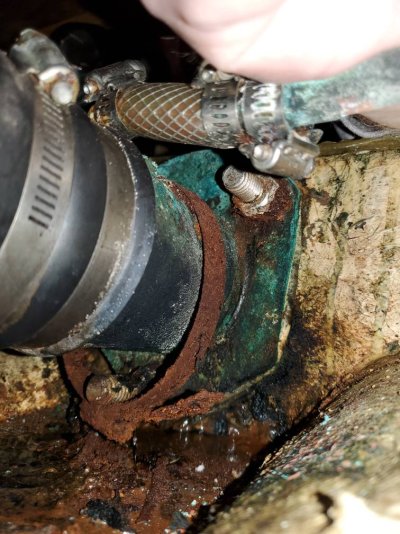mike66
Guru
I've started to dive into a leak that developed in the area of the shaft log. It doesn't seem to come from the shaft seal, but from behind the log/bearing. The area aft in the keel where the stern tube runs is wet, and when we were in the water a leak was coming up through the false floor.
So I'm thinking of removing the shaft and both bearing carriers, and pressure testing the shaft tube. There is room to sleeve the tube. By removing both ends, I can make sure the sleeve seals well, rather than push it blindly as far as I can.
I'll also carefully inspect the hull and keel to make sure they are tight.
So first up, anybody know how to remove the shaft from this?

So I'm thinking of removing the shaft and both bearing carriers, and pressure testing the shaft tube. There is room to sleeve the tube. By removing both ends, I can make sure the sleeve seals well, rather than push it blindly as far as I can.
I'll also carefully inspect the hull and keel to make sure they are tight.
So first up, anybody know how to remove the shaft from this?













